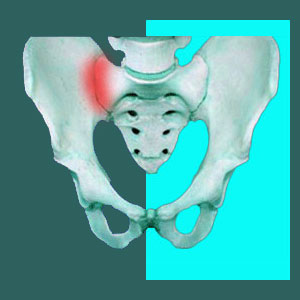
Sacroiliac pain in athletes can really impede physical expression and might be an early warning sign of serious impending injury. While the SI joint is unbelievably strong, it can still fail in various ways and when it does, the consequences will basically remove any athlete from their favorite physical pastime for the extended timeframe needed for treatment, recuperation and rehabilitation.
Athletes require much from their bodies and are often very in-tune with what is happening inside their anatomies. After all, the body is the tool of their trade and without perfect function, athletes can not perform to their full potential. Therefore, it is crucial that athletic individuals understand the various manifestations of sacroiliac pain. If they push themselves too hard with a compromised joint, they might just end their career prematurely with a very severe injurious trauma.
This dialog examines sacroiliac pain issues in athletic people. We will detail the causes of such occurrences, the results of ignoring pain and also provide some crucial mindbody facts that will assist athletes in achieving correct diagnoses of their discomfort.
Symptoms of Sacroiliac Pain in Athletes
Many athletes will recognize the early warning signs of some sacroiliac joint pain conditions far in advance of the symptoms becoming serious. Usually, these symptoms include pain upon rising from a seated position, pain when bearing weight and especially pain when running and performing dexterous activities with the legs.
Pain might be located in the deep buttocks, in the hip region or in the lower back. Rarely, some conditions might present pain more in towards in the inner leg and groin. Pain might lead to feelings of instability during weight bearing and ambulation, with many athletes eventually reporting feelings that their leg might give out.
Common Causes of Athletic SIJ Pain
By far, the most common cause of sacroiliac pain in athletes is ligamentous dysfunction. In select instances, the regulatory ligaments become overly tight and uncomfortable during ambulation. However, in far more patient profiles, the ligaments become overly lax and create instability in the sacroiliac region. This is the classic symptom that makes the leg feel so unstable and prone to further injury when performing strenuous tasks, such as running.
Traumatic injury usually will damage the pelvis or sacral spine before affecting the sacroiliac. However, in some sports, such as rugby, American football, gymnastics and martial arts, rare cases of sacroiliac injury are reported as the direct cause of the present complaint. Typically, these conditions merely require time and some conservative rehabilitation efforts in order fully resolve.
In older athletes, chronic versions of ligamentous problems or skeletal joint deterioration might incite pain. While these scenarios are rare, they are possible, given a history of injury or recurring RSI in the joint region.
Of course, less commonly, it is possible for athletes to suffer all the additional causes of sacroiliac pain that can affect any other person, such as sacroiliitis and autoimmune disease.
Crucial Knowledge about Sacroiliac Pain in Athletes
Pain in the hip/pelvis/lower back is never a joke for any athlete. These locations might indicate serious pathology that might pose a risk to any athletic career. However, although diagnostic evaluation should be performed and all safety measures taken, patients should never assume that they are damaged or broken in some unfixable way.
Many sacroiliac, hip and lower back pain syndromes are functionally-motivated, rather than structural. This means that basic constructive care, like physical therapy, should be able to resolve the pain, given time and effort. However, this does not mean that structural irregularities in the region will not be mistakenly blamed for creating pain, often leading athletes towards more invasive and dramatic treatments that are not even necessary.
It is also of extreme importance that all athletes understand that many pain conditions are not at all anatomically-motivated. Instead, they might result from mindbody syndromes that typically choose to place pain in the most distracting and significant areas of the body possible. For athletic individuals, there is really nowhere more effective for capturing conscious attention than the SIJ region. Many of these syndromes are directly linked to psychoemotional issues that are caused by athletic competition and the self-critical personality traits that cause athletes to excel. Therefore, all athletes should be continuously on-guard for mindbody pain and utilize the proven tactics of knowledge therapy to prevent symptoms and treat symptoms that might occur. Complete mindbody health is the very best path towards a long and successful career in any athletic activity.
Sacroiliac Joint Pain > Sacroiliac Facts > Sacroiliac Pain in Athletes





